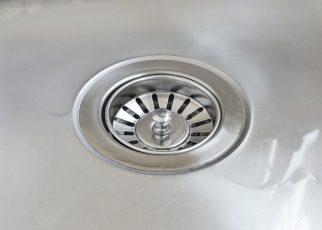Maintaining a business’s plumbing system is often overlooked, but neglecting this crucial aspect can lead to a multitude of problems.
From unexpected leaks to costly repairs, the ramifications of poor plumbing maintenance can be severe. Understanding the importance of regular plumbing checks can save time, money, and frustration for any business owner.
Financial Implications of Neglected Plumbing
The financial repercussions of plumbing issues may not be immediately evident, but they can sneak up on unsuspecting businesses. Water damage is one of the more common consequences, leading to expensive repairs and potential loss of inventory.
A small leak can, over time, morph into a major problem, resulting in costly renovations.
Moreover, businesses may face fines or legal repercussions if they fail to comply with local plumbing codes. These regulations are put in place to ensure safety and efficiency, and ignoring them can lead to significant financial penalties.
It is clear that investing in proper plumbing maintenance is not just a wise choice; it is a protective measure against unanticipated expenses.
Health and Safety Concerns
Clogged drains and leaking pipes can create a breeding ground for bacteria and mold. This can lead to health concerns for employees and customers alike.
The presence of mold, in particular, can result in respiratory issues or allergic reactions, which can hinder productivity and lead to absenteeism.
In such cases, quick response for home and business plumbing is crucial to address health hazards promptly and ensure the safety of your workplace.
Furthermore, standing water from leaks can pose slip hazards. For businesses that host customers on-site, this can result in accidents that may culminate in liability claims.
A focus on plumbing maintenance can directly contribute to a safer work environment, minimizing risks for everyone involved.
Maintaining Operational Efficiency

A well-functioning plumbing system is intricately linked to the overall efficiency of business operations. For restaurants, cafes, or similar establishments, a single clogged sink can halt food preparation and service, leading to lost revenue.
In offices, inadequate restroom facilities can lead to disgruntled employees and decreased morale.
Regular plumbing maintenance helps identify issues before they escalate.
This proactive approach keeps operations running smoothly, fostering an atmosphere where employees can focus on their tasks instead of worrying about plumbing problems.
Environmental Responsibility
Businesses today are increasingly aware of their environmental impact, and plumbing maintenance plays a crucial role in this regard.
Leaky pipes waste significant amounts of water, contributing to both environmental degradation and higher utility bills.
By addressing plumbing issues promptly, businesses can reduce their water footprint and demonstrate a commitment to sustainability.
Moreover, integrating water-efficient fixtures during maintenance checks can lead to long-term savings and environmental benefits.
Low-flow toilets, faucets, and appliances are just a few examples of how businesses can conserve resources while maintaining functionality.
Enhancing Property Value
For business owners looking to sell or lease their property, the state of the plumbing system can significantly affect market value. A well-maintained plumbing system signals to potential buyers or tenants that the property has been cared for.
It can be a selling point that not only increases the attractiveness of the property but also justifies a higher price tag.
Regular inspections and maintenance can help spot potential issues that could undermine property value, allowing businesses to address these concerns before they become problematic.
A proactive stance on plumbing maintenance can be viewed as an investment in the property itself.
Compliance with Regulations
Every business is subject to local health and safety regulations, which often include plumbing standards. Regular maintenance helps ensure compliance with these codes, reducing the likelihood of inspections resulting in fines or shutdowns.
Staying up to date with plumbing maintenance can prevent interruptions to business operations caused by compliance issues.
In addition to adhering to regulations, businesses can enhance their reputation in the community.
Demonstrating a commitment to safety and maintenance builds trust with customers and clients, fostering positive relationships that can lead to repeat business.
Convenience and Peace of Mind
Imagine being in the middle of a busy day when a plumbing issue arises. The inconvenience can lead to stress, distraction, and lost revenue.
Regular plumbing maintenance alleviates these concerns, as businesses are less likely to face sudden plumbing disasters when they stay on top of upkeep.
With scheduled maintenance, business owners can rest easy knowing that potential issues are being managed before they escalate.
This peace of mind allows them to focus on other critical areas of business growth and development without the constant worry of plumbing failures.
Customizing Maintenance Plans
Every business is unique, and so are its plumbing needs. A one-size-fits-all approach to maintenance is rarely effective. Tailoring maintenance plans to the specific requirements of a business ensures that all plumbing aspects are addressed adequately.
This can include adjusting schedules based on usage patterns or prioritizing certain areas that may require more frequent attention.
Creating a customized maintenance plan may involve consultations with professional plumbers who can provide insights based on years of experience.
This collaborative process helps businesses make informed decisions about their plumbing systems.
Building Long-Term Relationships with Professionals
Establishing a relationship with a reliable plumbing service is paramount for ongoing maintenance. When businesses work with a consistent plumbing provider, they gain access to specialized knowledge and quicker response times for emergencies.
Familiarity breeds efficiency; professionals who understand a business’s plumbing system can spot issues faster than someone unfamiliar with the setup.
These long-term relationships can also yield financial benefits. Many plumbing companies offer maintenance contracts that provide services at a reduced rate, delivering cost-effective solutions for ongoing needs.
Leveraging Technology in Plumbing Maintenance
The plumbing industry has witnessed significant advancements in technology, making regular maintenance more efficient and effective.
Smart sensors can detect leaks, monitor water usage, and even send alerts to business owners when issues arise. This proactive approach allows for rapid responses, minimizing damage and downtime.
Moreover, many plumbing services now use video inspection techniques to examine pipes without invasive methods.
These technologies not only enhance the accuracy of diagnostics but also save time and money, leading to a more streamlined maintenance process.
Training Employees on Basic Plumbing Care
While professional maintenance is essential, empowering employees with basic plumbing knowledge can be beneficial.
Training staff to recognize common plumbing issues—like how to identify leaks or when to notify management of problems—can lead to quicker responses and prevent small issues from ballooning into larger ones.
Creating a culture of awareness surrounding plumbing care can involve simple actions, such as encouraging staff to report unusual sounds or smells in the plumbing system.
This collaborative approach fosters a shared responsibility that can lead to better overall maintenance.
Recognizing the Signs of Trouble
Every plumbing system has its red flags. Understanding what to look for can make a significant difference in maintaining a business’s plumbing health.
Common signs, such as slow drains, unusual sounds, or water discoloration, should not be ignored. Recognizing these early can lead to timely interventions, saving businesses from major repairs and disruptions.
Encouraging a culture of vigilance among employees can complement professional maintenance efforts, resulting in a comprehensive approach to plumbing care.
Regular training and reminders can fortify this mindset, ensuring that everyone remains attentive to the plumbing system’s condition.













































